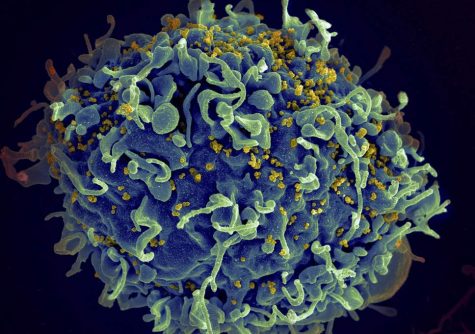Second and Third Man Cured of HIV
April 2, 2019
Almost exactly twelve years after the first man was cured of, or in long-term remission from, the Human Immunodeficiency Virus(HIV), another man has been revealed to be likely cured of the disease.
The first man to be “cured” of HIV was Timothy Ray Brown, otherwise identified as the “Berlin patient.” He almost died from treatments before doctors found the virus was no longer present in his body. However, even after all these years, some scientists are still skeptical of calling this a cure.
Now, news of a new, similar case has reached the public. A man dubbed the “London Patient” has been off of virus-suppressing drugs for 18 months and still shown no detectable signs of the virus. He is only the second person ever to sustain long-term viral suppression without the help of antiretroviral treatment.
He had been diagnosed with HIV in 2003 and Hodgkin’s lymphoma in 2012. After his cancer proved resistant to standard chemotherapy, the patient was advised to have a bone marrow transplant in 2016. Bone marrow transplants are both dangerous and expensive procedures, in which healthy donated stem cells are given to the patient in an effort to try and repair their damaged ones.
In a somewhat surprising turn of events, not only did the transplant help to cure London Patient’s cancer, but also resulted in HIV becoming dormant within his body. Scientists believe this was caused by something called the delta-32 mutation found on the CCR5 gene, which is only identified in one percent of western Europe’s population, according to an article in The Independent.
Even more recent, another man, the “Dusseldorf Patient,” was given a bone marrow transplant with the same results. However, he has only been off of antiretroviral medication for about three months, so scientists are even more careful about labeling his case a cure.
While most experts agree that three cures resulting from the same mutation offers a good guideline for working towards a true cure for HIV, many are also skeptical. For one thing, bone marrow transplants have a plethora of risks associated with them, such as a graft-versus-host reaction and increased susceptibility to infection. They are also very expensive procedures not available to most people.
While these cases of possible cures can provide a sense of hope for those both living with HIV and those who will be infected in the future, most scientists concur that there is still a long road ahead in pursuing a true cure. It will likely be another 15 years or more before a universal cure for the virus is found and made available to the public.

(National Institute of Allergy and Infectious Diseases/AP)





